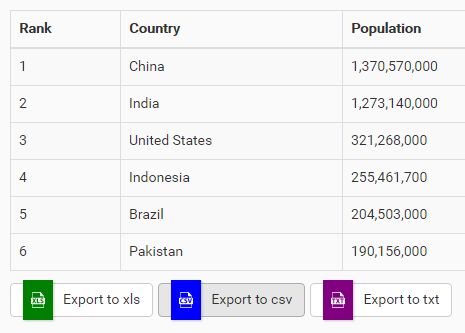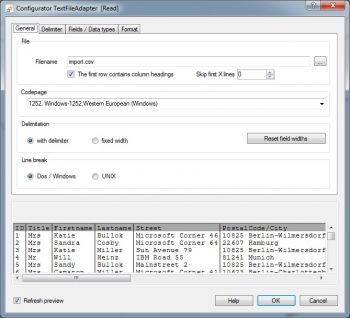Import Data From A Csv Html Or Text File
On the File menu, click Import.
In the Import dialog box, click the option for the type of file that you want to import, and then click Import.
In the Choose a File dialog box, locate and click the CSV, HTML, or text file that you want to use as an external data range, and then click Get Data.
Follow the steps in the Text Import Wizard, where you can specify how you want to divide the text into columns and other formatting options. When you have completed step 3 of the wizard, click Finish.
In the Import Data dialog box, click Properties to set query definition, refresh control, and data layout options for the external data that you are importing. When you have finished, click OK to return to the Import Data dialog box.
Do one of the following:
Also, if you have a list lat/long coordinates, you can easily import this data in your GIS project. Overview of the task¶. We will be importing a text file of earthquake.
To | Do this |
|---|---|
Import the data to the current sheet | Click Existing sheet, and then click OK. Amiga 500 workbench adf download. |
Import the data to a new sheet | Click New sheet, and then click OK. Excel adds a new sheet to your workbook, and automatically pastes the external data range at the upper-left corner of the new sheet. |

Note: You can change the layout or properties for the imported data at any time. On the Data menu, point to Get External Data, and then click either Edit Text Import or Data Range Properties. If you select Edit Text Import, select the file that you imported originally, and then make changes to the external data in the Text Import Wizard. By selecting Data Range Properties, you can set query definition, refresh control, and data layout options for the external data.
See also
„Excel“ skirta „Microsoft 365“ skirtam „Mac“ Excel 2019 for Mac „Excel 2016“ skirta „Mac“ Excel for Mac 2011.On the File menu, click Import.In the Import dialog box, click the option for the type of file that you want to import, and then click Import.In the Choose a File dialog box, locate and click the CSV, HTML, or text file that you want to use as an external data range, and then click Get Data.Follow the steps in the Text Import Wizard, where you can specify how you want to divide the text into columns and other formatting options. When you have completed step 3 of the wizard, click Finish.In the Import Data dialog box, click Properties to set query definition, refresh control, and data layout options for the external data that you are importing.
When you have finished, click OK to return to the Import Data dialog box.Do one of the following:ToDo thisImport the data to the current sheetClick Existing sheet, and then click OK.Import the data to a new sheetClick New sheet, and then click OK.Excel adds a new sheet to your workbook, and automatically pastes the external data range at the upper-left corner of the new sheet.

